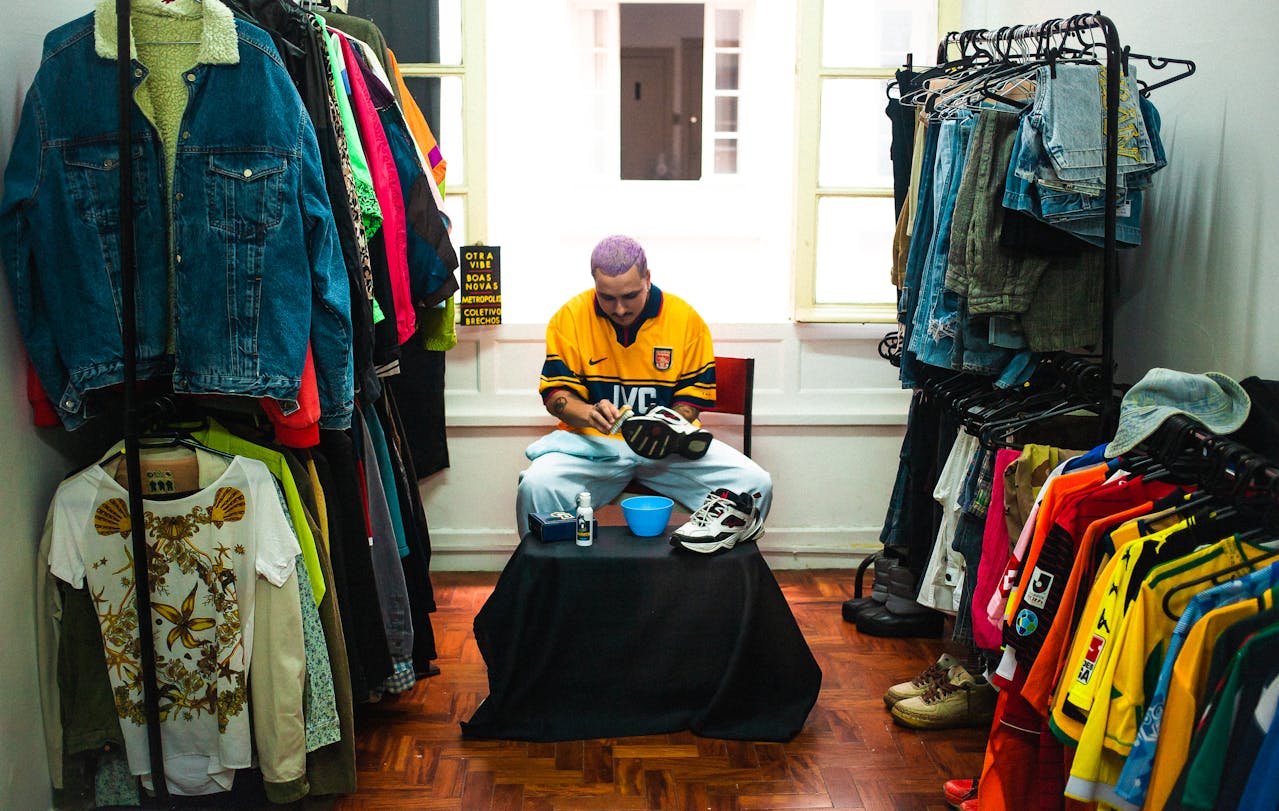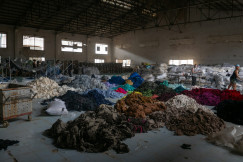Library
04 April 2025
WRAP report publishes results for calculating displacement rates for clothing circular business models
Library
04 April 2025
R&I, techniques and technological solutions
Skills
Textile
+7 more
Login / create an account to be able to react
-
21

A recent WRAP report, "Displacement Rates Untangled," reveals that repair and resale models significantly reduce new clothing purchases. Repairing five garments avoids four new purchases (82.2% displacement rate), while buying five second-hand items prevents three new purchases (64.6% displacement rate). Environmentally, repairing a cotton t-shirt saves over 7.5kg CO₂e, and purchasing pre-owned jeans online saves more than 30kg CO₂e. WRAP emphasises the need for standardised measurement of these impacts and encourages companies to adopt this methodology to validate environmental benefits.
Topics
Albania
Armenia
Austria
Belgium
Bosnia and Herzegovina
Bulgaria
Croatia
Cyprus
Czechia
Denmark
Estonia
EU-27
Finland
France
Georgia
Germany
Greece
Hungary
Iceland
Ireland
Italy
Kosovo
Latvia
Liechtenstein
Lithuania
Luxembourg
Malta
Moldova
Montenegro
Netherlands
North Macedonia
Norway
Poland
Portugal
Romania
Serbia
Slovakia
Slovenia
Spain
Sweden
Switzerland
Türkiye
Ukraine
Academic / Research and VET Institutions
Business Support Organisation
Company with 250 or more employees
Consumer Organisations
Cultural and Heritage Organisations
Destination Management & Marketing Organisations
EU Institutions
Financial Institutions and Investors
Industry Associations and Chambers of Commerce
International Organisations
Local Authorities
Media / Journalist Organisations
National authorities
Networks and Federations / Confederations
NGOs / Non-profits
Regional Authorities
SMEs (a company with less than 250 employees)
Social Economy Entity
Trade Unions
-
Transition Pathway's building blocks
-
-
R&I, techniques and technological solutions
-
Skills
-
-
Industrial ecosystems
-
-
Textile
-
-
Textiles ecosystem areas
-
-
Apparel and clothing accessories
-
Household/interior textiles
-
Technical textiles
-
Leather and fur
-
Footwear
-
Research and Innovation
-
Waste management, reuse and repair
-
Share
The fashion industry accounts for 8-10% of global emissions, with production doubling since 2000. Circular business models (CBMs) like resale, repair, rental, and upcycling help reduce environmental impact by extending clothing lifespan. Displacement rates measure how often CBMs prevent new purchases—peer-to-peer resale displaces 64.6%, repairs 82.2%, rentals 48%, and upcycling 57%.
CBMs significantly cut emissions: buying second-hand jeans saves 30 kg CO₂e, while repairing a T-shirt saves 7.5 kg CO₂e. However, inconsistent measurement has hindered adoption, making standardised methodologies essential. WRAP’s study introduces a robust approach to track displacement rates reliably.
Research methods include consumer surveys assessing if a CBM transaction replaced a new purchase, wardrobe studies, and market data comparisons. Case studies from platforms like Depop, eBay, and Vestiaire Collective validate findings. A UK pilot study refined survey clarity, addressing impulse buying and consumer uncertainty.
To maximise CBM impact, industry-wide adoption of standardised measurement is critical. Accurate tracking enables brands to credibly report emissions reductions, helping the fashion sector transition to sustainability.
Comments (0)
See also
-
51
Transition Pathway for a resilient, sustainable, and digital textiles ecosystem
- Categories
- Infrastructure Investments and funding R&I, techniques and technological solutions +28 more
-
31
Small mid‑caps: bridging the gap between SMEs and large companies
- Categories
- Infrastructure Investments and funding R&I, techniques and technological solutions +28 more
-
118
The EU’s vision for sustainable fashion: transforming the textiles sector by 2030
- Categories
- Infrastructure Investments and funding R&I, techniques and technological solutions +28 more




